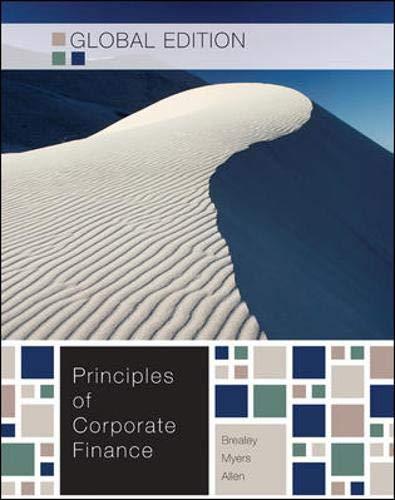21. Magna Charter is a new corporation formed by Agnes Magna to provide an executive flying service...
Question:
21. Magna Charter is a new corporation formed by Agnes Magna to provide an executive flying service for the southeastern United States. The founder thinks there will be a ready demand from businesses that cannot justify a full-time company plane but nevertheless need one from time to time. However, the venture is not a sure thing. There is a 40%
chance that demand in the first year will be low. If it is low, there is a 60% chance that it will remain low in subsequent years. On the other hand, if the initial demand is high, there is an 80% chance that it will stay high. The immediate problem is to decide what kind of plane to buy. A turboprop costs $550,000. A piston-engine plane costs only $250,000 but has less capacity. Moreover, the piston-engine plane is an old design and likely to depreciate rapidly. Ms. Magna thinks that next year secondhand piston aircraft will be available for only $150,000.
Table 10.7 shows how the payoffs in years 1 and 2 from both planes depend on the pattern of demand. You can see, for example, that if demand is high in both years 1 and 2, the turbo will provide a payoff of $960,000 in year 2. If demand is high in year 1 but low in year 2, the turbo’s payoff in the second year is only $220,000. Think of the payoffs in the second year as the cash flow that year plus the year-2 value of any subsequent cash flows.
Also think of these cash flows as certainty equivalents, which can therefore be discounted at the risk-free interest rate of 10%.
Ms. Magna now has an idea: Why not start out with one piston plane. If demand is low in the first year, Magna Charter can sit tight with this one relatively inexpensive aircraft.
On the other hand, if demand is high in the first year she can buy a second piston-engine plane for only $150,000. In this case, if demand continues to be high, the payoff in year 2 from the two piston planes will be $800,000. However, if demand in year 2 were to decline, the payoff would be only $100,000.
a. Draw a decision tree setting out Magna Charter’s choices.
b. If Magna Charter buys a piston plane, should it expand if demand turns out to be high in the first year?
◗ TABLE 10.7 The possible payoffs from Ms. Magna’s flying service.
(All figures are in thousands. Probabilities are in parentheses.)
Payoffs from the Turboprop Year 1 demand High (.6) Low (.4)
Year 1 payoff $150 $30 Year 2 demand High (.8) Low (.2) High (.4) Low (.6)
Year 2 payoff $960 $220 $930 $140 Payoffs from the Piston Engine Year 1 demand High (.6) Low (.4)
Year 1 payoff $100 $50 Year 2 demand High (.8) Low (.2) High (.4) Low (.6)
Year 2 payoff $410 $180 $220 $100
c. Given your answer to
b, would you recommend that Ms. Magna buys the turboprop or the piston-engine plane today?
d. What would be the NPV of an investment in a piston plane if there were no option to expand? How much extra value is contributed by the option to expand?
Step by Step Answer:





